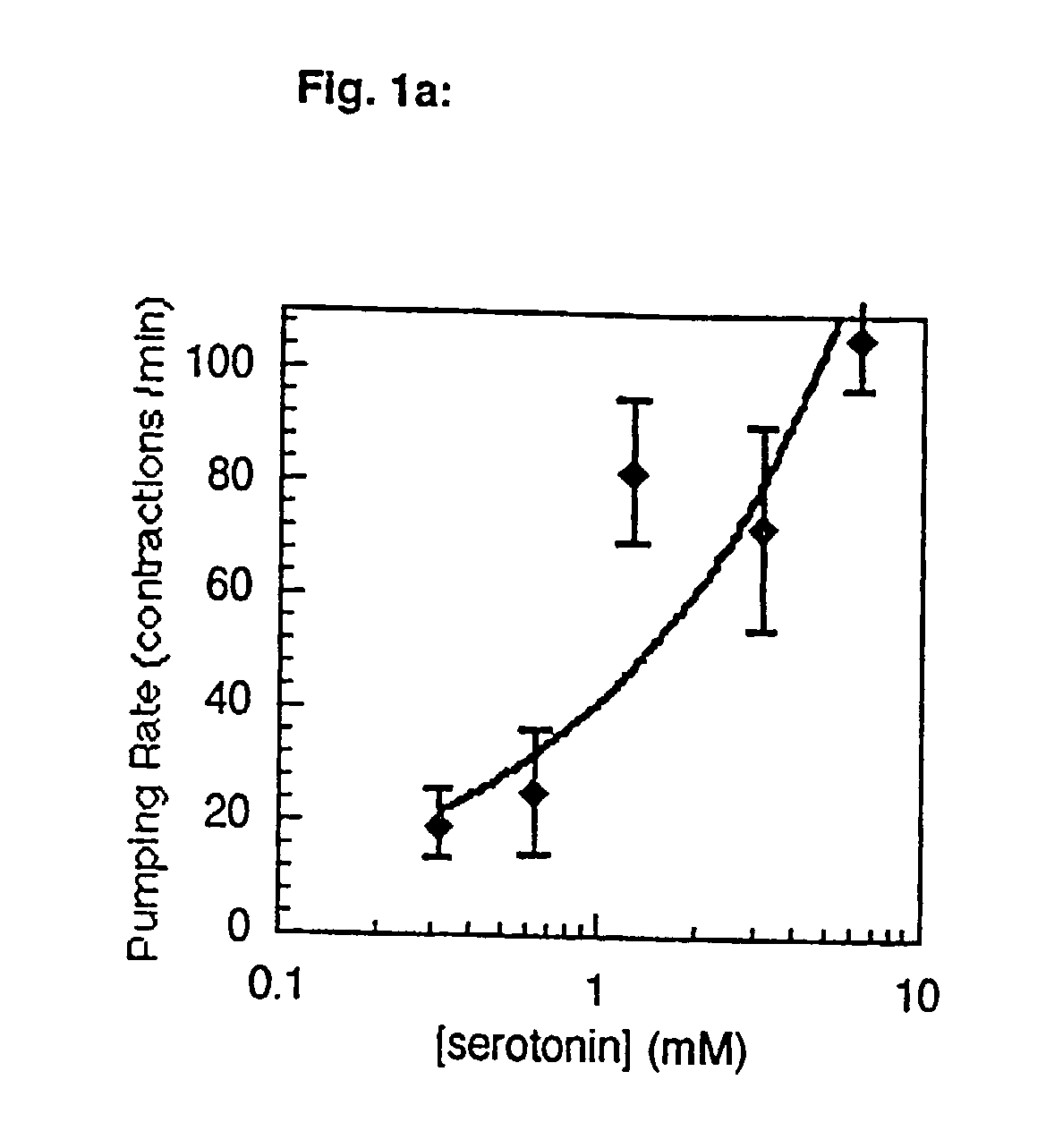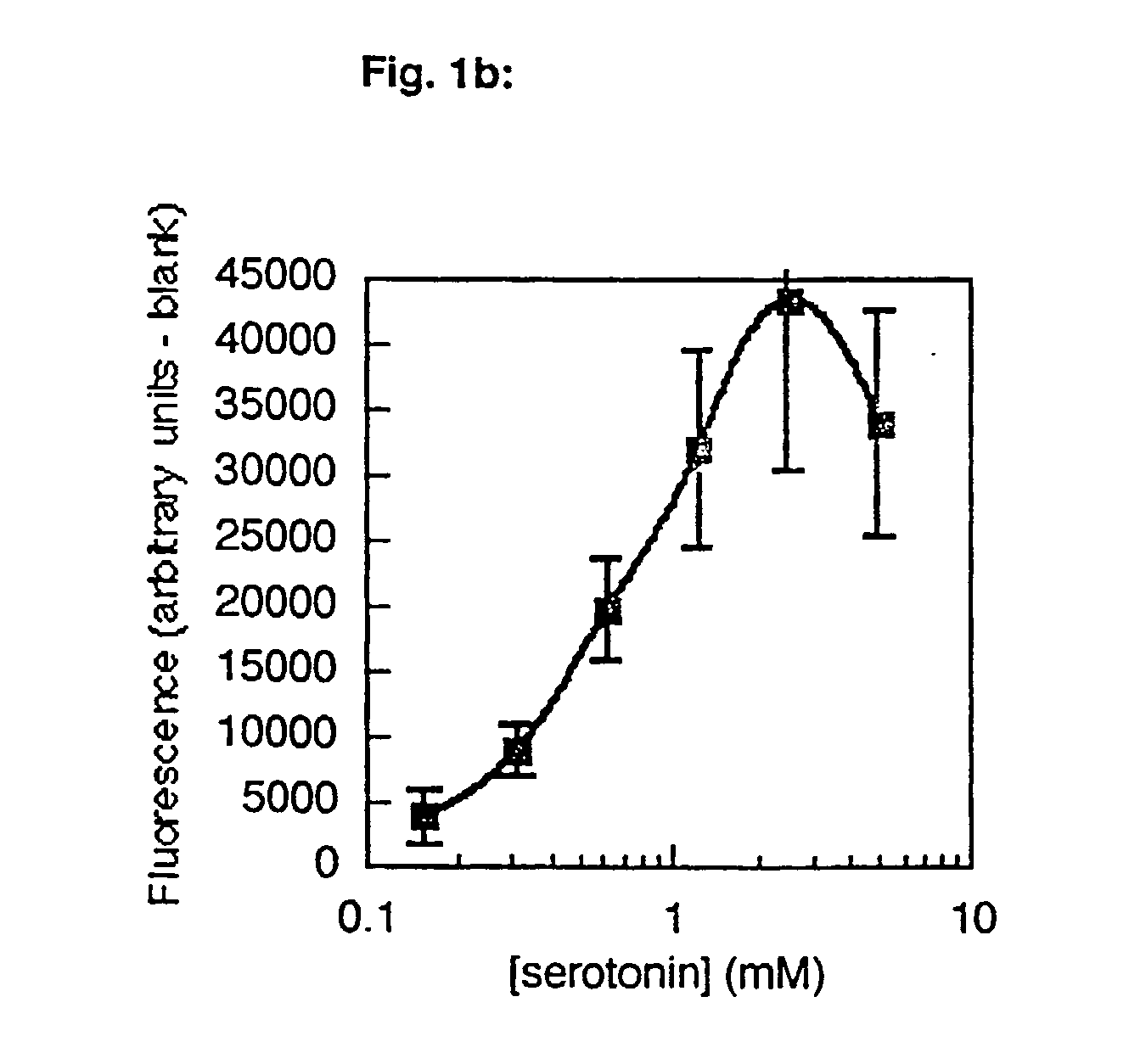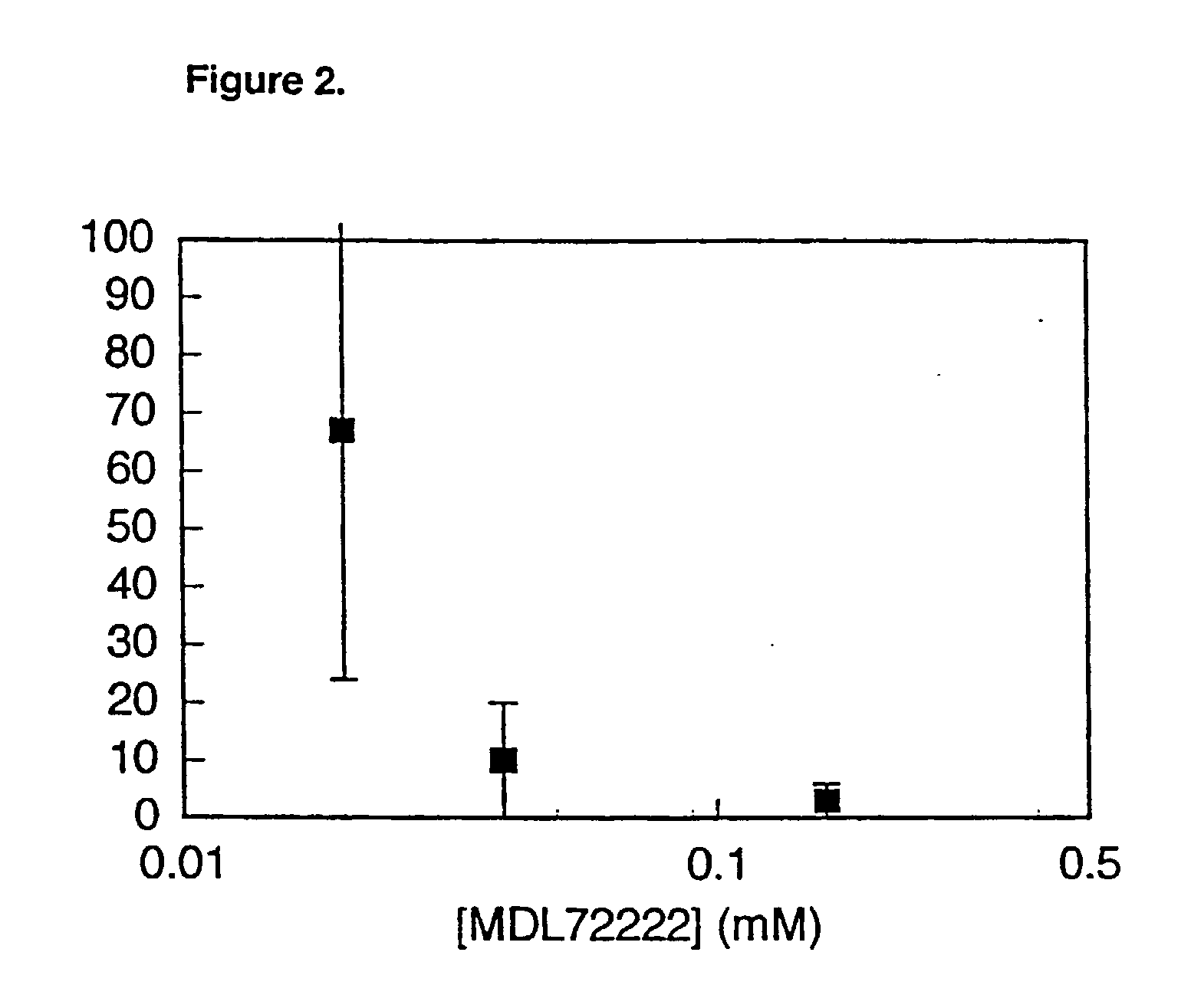5ht3 receptors of nematodes, polynucleotide molecules encoding same, and antagonists thereof
a technology of nematodes and polynucleotide molecules, applied in the direction of depsipeptides, peptide/protein ingredients, fungi, etc., can solve the problems of fewer control options for plant parasitic nematodes, serious morbidity and economic loss worldwide, and the most toxic and undesirable remaining available agents in current us
- Summary
- Abstract
- Description
- Claims
- Application Information
AI Technical Summary
Benefits of technology
Problems solved by technology
Method used
Image
Examples
example 2
5-HT.sub.3-Selective Antagonist is Nematicidal for C. elegans and Insecticidal for the Sucking Insect Pest Myzus persicae (Hemiptera: Aphididae) and Antifeedant for the Chewing Insect Pest Helicoverpa armiera (Lepidoptera: Noctuidae).
[0084] The above data indicates that a 5-HT.sub.3 receptor present in C. elegans and also likely to be present in other nematodes which respond to serotonin in a similar fashion to C. elegans and is responsible for mediating increased rate (and strength) of pharngeal pumping in response to exogenous or endogenous serotonin. Because the pharyngeal pump is essential for nematode feeding and the maintenance of the nematode "hydrostatic skeleton" [Brownlee, D. J. A. et al. 1997, supra] and a previously established target organ for nematicides, an investigation was conducted to assess whether the 5-HT.sub.3-selective antagonists would function as nematicidal agents in a chronic exposure protocol.
[0085] C. elegans nematodes were cultured on the HMS / 174 strain...
example 3
[0091] 1. It is well known that vertebrate aminergic receptors of the 7-transmembrane G-protein-linked superfamily have a DRY triplet of amino acids located close to one end of the 3rd transmembrane segment. Analyses conducted by the present inventors have shown that 5-HT.sub.3A receptors from four vertebrate species have a DIY conserved triplet.
[0092] 2. In an eclustalw (FIG. 3) alignment of representative known mammalian 5-HT.sub.3 receptors, representative known mammalian, insect and nematode nAChRs and the three nematode 5-HT.sub.3 receptor sequences of the present invention (previously assigned as hypothetical acetylcholine-like receptor F18G5.4, putative 5-HT.sub.3 receptor C31H5.3 and ligand gated ion channel F25G6.4 / CE09640), the latter three fall outside either of the known sub-classes of mammalian 5-HT.sub.3 receptor subunits. However, F18G5.4 is the closest sequence to the group of mammalian 5-HT.sub.3 receptors, F25G6.4 / CE09640 has a DIY sequence motif i...
example 4
Cloning and Construction of Expression Cassettes
[0093] The three sequences described in Example 3 above were identified in the C. elegans genome database by the automated algorithm "GeneFinder". Since it is not therefore possible to conclude that these sequences are-full-length or authentic, nor that they are expressed in vivo in the form identifed by GeneFinder, the present inventors cloned and expressed the three cDNAs (DIY, F18 and DIAY) which are encoded in part by the sequences identified as F25G6.4 / CE09640. F18G5.4 and C31H5.3 in the C. elegans genome database.
[0094] 1. Oligo-dT-primed cDNA was prepared from mixed life-stages of C. elegans. One portion of this was cloned into lambda gt10 to generate a cDNA library. Another portion was used as template for amplification of sequence-specific probes for each of the target genes. In each case, this was achieved using a pair of unique sequence primers designed, on the basis of the cDNAs predicted by GeneFinder, to span a central re...
PUM
| Property | Measurement | Unit |
|---|---|---|
| temperature | aaaaa | aaaaa |
| cell membrane potential | aaaaa | aaaaa |
| loss of weight | aaaaa | aaaaa |
Abstract
Description
Claims
Application Information
 Login to View More
Login to View More - R&D
- Intellectual Property
- Life Sciences
- Materials
- Tech Scout
- Unparalleled Data Quality
- Higher Quality Content
- 60% Fewer Hallucinations
Browse by: Latest US Patents, China's latest patents, Technical Efficacy Thesaurus, Application Domain, Technology Topic, Popular Technical Reports.
© 2025 PatSnap. All rights reserved.Legal|Privacy policy|Modern Slavery Act Transparency Statement|Sitemap|About US| Contact US: help@patsnap.com



